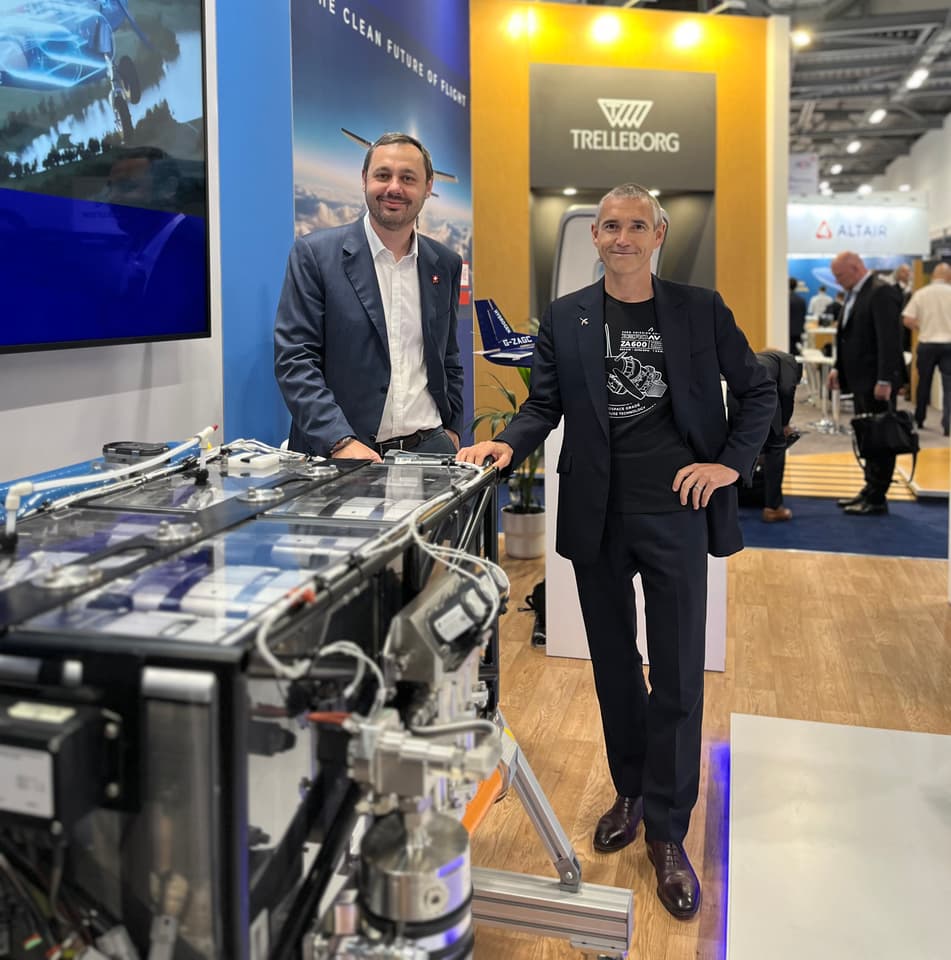Swiss clean-energy aviation startup JEKTA has announced a partnership with fuel-cell powertrain developer ZeroAvia to extend the flight range and payload capacity of an upcoming electric amphibious passenger aircraft called the PHA-ZE 100.
For the past few years, JEKTA has been designing its Passenger Hydro Aircraft Zero Emission 100 – or PHA-ZE 100 – around a battery-electric powertrain.
The amphibious passenger aircraft will feature a composite airframe to nip corrosion in the bud, 10 electric motors/props at 180 kW each spread over the roof-mounted wings for a cruising speed of 135 knots (155 mph), and enough quick-charge battery blocks for one-hour hops “from oceanic islands to Scandinavian fjords” – with 30 minutes in reserve to cope with unforeseen flight plan changes.
It can accommodate up to 19 passengers and three crew, making use of materials for the inside such as cork, natural fiber composites and vegan leather. JEKTA recently tapped MBVision to help visualize a bunch of interior designs for the aircraft, including economy, executive, VIP and air ambulance layouts.

JEKTA/ZeroAvia
The company description notes that the aircraft is configured to take off and land in coastal waters, rivers, canals and lagoons as well as land-based runways. And the overall design can “accept existing and future energy storage solutions.” Initial plans called for battery technology to provide the juice for the electric motors, but the partnership with ZeroAvia will invite hydrogen to the party and enable longer zero-emission flights, with larger payloads. At this stage, the collaboration is talking up range figures in the region of 500 to 600 km (310 – 373 miles) and a payload increase of one tonne.
“By working with ZeroAvia and defining a suitable fuel-cell system, we can offer our potential operator clients the choice of two fuel sources,” JEKTA’s CEO, George Alafinov, commented. “The hydrogen system delivers a viable alternative to electric battery power that promises a significant increase in the range of our PHA-ZE 100, which will suit operators serving longer regional routes. In contrast, the battery power option will suit shorter-range missions and operators flying in locations where electric power is more cost-effective and accessible.”
JEKTA and ZeroAvia will now work on the development and certification of an integrated fuel-cell power generation system for the PHA-ZE 100 – including electronics, hydrogen tank and fuel system. The project timeline hasn’t been revealed, but ZeroAvia already has its own 19-seat technology demonstrator in the air so it may be the certification part of the process that eats up the larger slice of the development pie.
Folks visiting the UK’s Farnborough Airshow this week can find out more at ZeroAvia’s booth in Hall 1. Delivery of the first PHA-ZE 100 – which is being developed to meet CS-23 certification in Europe and FAR-23 in the US – is reportedly estimated for a 2029 window.
Source: ZeroAvia
Source of Article